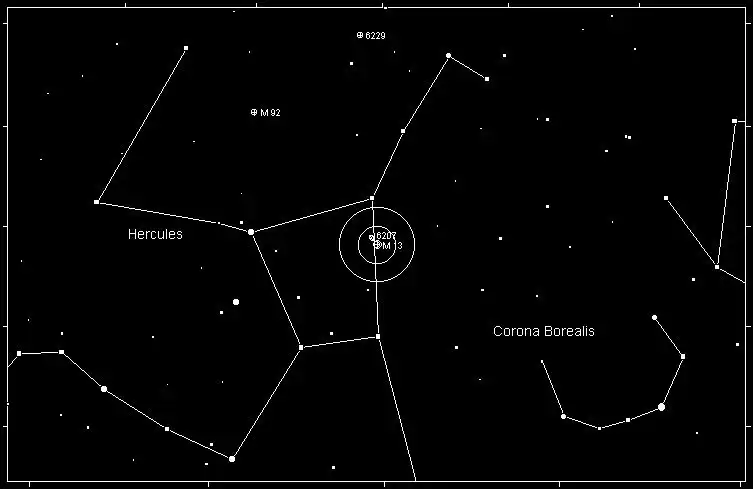Messier 13, also known as the Great Hercules Cluster, is one of the most famous globular clusters in the night sky. It is located in the constellation Hercules and is a popular target for amateur astronomers due to its brightness and stunning visual appearance through telescopes. With a rich history dating back to the 18th century, M13 has fascinated stargazers for centuries and continues to be a highlight in the world of astronomy.
Description
Messier 13 is a globular cluster, which means it is a densely packed group of stars bound together by gravity. This cluster contains hundreds of thousands of stars, all tightly grouped in a spherical shape. M13 spans about 145 light-years in diameter, making it one of the largest known globular clusters. It lies approximately 22,200 light-years away from Earth and is estimated to be about 11.65 billion years old, making it a relic from the early days of our galaxy.
The stars in M13 are mostly old, red giant stars, but the cluster also contains some blue stragglers—hot, young stars that are thought to have formed through stellar collisions or mergers. The cluster is visible as a hazy spot to the naked eye under dark skies, but it reveals its full splendor through telescopes, where individual stars can be resolved, especially in the outer regions.
Magnitude
Messier 13 has an apparent magnitude of 5.8, which means it is just barely visible to the naked eye under ideal dark-sky conditions. However, even small telescopes or binoculars will make the cluster easily observable, and larger telescopes will bring out the intricate details of its star-packed core.

Seasonal Visibility
M13 is best observed in the late spring and summer months, particularly from May to September. During this time, the constellation Hercules is high in the sky for observers in the Northern Hemisphere, making M13 a prominent target throughout the night. The cluster reaches its highest point in the sky around midnight in June, providing optimal viewing conditions.
Constellation and Location
Messier 13 is located in the constellation Hercules, which is a relatively faint constellation bordered by Lyra, Corona Borealis, Ophiuchus, and Aquila. Hercules is known for its distinctive keystone-shaped asterism, which is a trapezoid formed by four stars: Pi, Epsilon, Zeta, and Eta Herculis.
How to Find M13
To locate M13, first, identify the keystone asterism in Hercules. This asterism forms the central part of the constellation and is easy to spot once you know what to look for. M13 is situated along the western edge of the keystone, about one-third of the way between the stars Eta Herculis and Zeta Herculis.
Using binoculars or a finderscope, sweep slowly along this line, and you should spot M13 as a small, fuzzy ball of light. Once located, switch to a higher magnification eyepiece on your telescope to reveal more details, such as the individual stars that make up the cluster, particularly in the less densely packed outer regions.

History
Messier 13 was discovered by the English astronomer Edmond Halley in 1714, who described it as "a little patch of light." It was later cataloged by Charles Messier in 1764 as the 13th entry in his famous catalog of nebulous objects, hence its designation as M13.
In the 1970s, M13 gained additional fame when it was chosen as the target for the Arecibo message, a radio message sent from Earth in 1974 to communicate with potential extraterrestrial civilizations. The message, which was a binary-encoded description of humanity, was beamed towards M13 because it was a dense target with a large number of stars.
While the message is expected to take about 25,000 years to reach its destination, and the likelihood of contact is slim due to the motion of celestial bodies, the event was a symbolic gesture representing humanity’s first deliberate attempt to communicate with extraterrestrial life.
Conclusion
Messier 13, the Great Hercules Cluster, remains one of the most iconic and easily recognizable globular clusters in the night sky. Whether viewed through binoculars or a powerful telescope, it offers a mesmerizing glimpse into the distant past of our galaxy. Its position in the constellation Hercules makes it a must-see for amateur astronomers, especially during the summer months when it shines brightest in the night sky. Its discovery, historical significance, and stunning visual appearance ensure that M13 will continue to captivate observers for generations to come.
